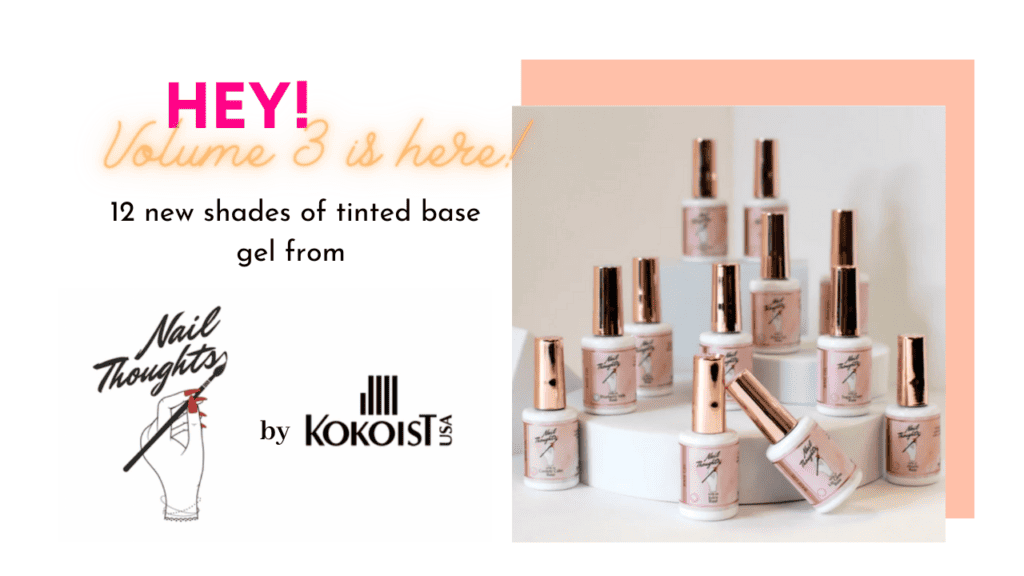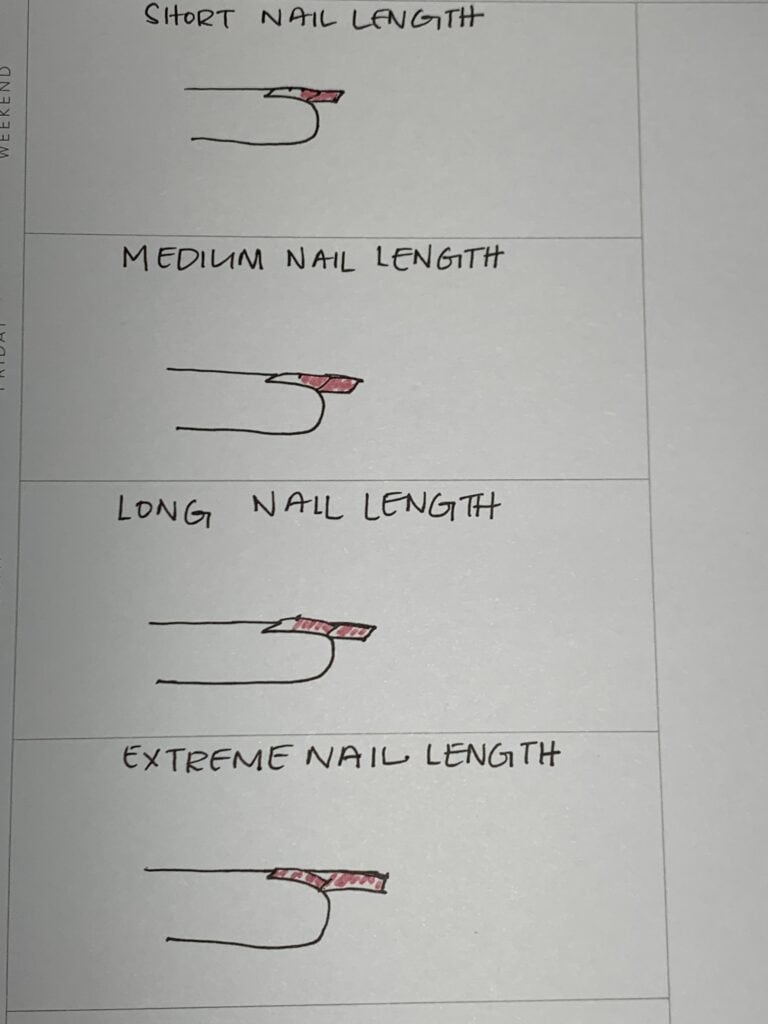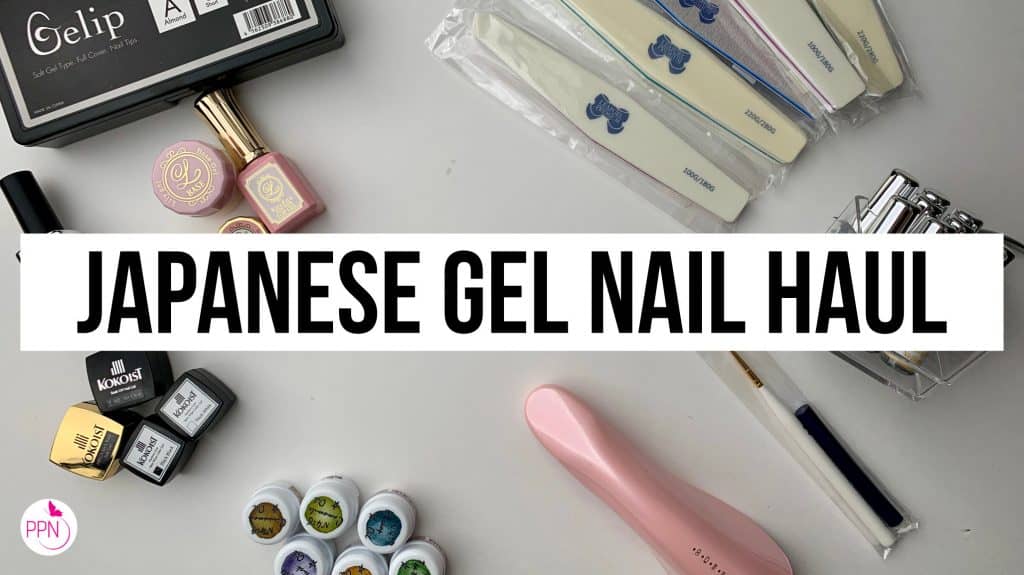Choosing the right structure gel will ensure the longevity of your structured gel overlays.
If you choose to simply go with the brand that is the most popular, then you may end up with more service breakdowns then you’d want to repair.
Choosing the right structure gel starts by narrowing down what products and services you want to offer.
Before diving in today!
Don’t forget to snag the latest from Nail Thoughts by Kokoist, Nail Thoughts Bases Volume 3!
Click here to shop: (code PPN10 saves you 10% and supports this blog).

Here’s how I recommend about going through your selection process:
- Choose whether you’ll be doing your structures with a hard gel or soft gel system
- Decide two, maybe 3 brands that you ideally want to master your structured overlays with
- Consider the length of the nails you are working on.
Once you’ve gotten clear in these three areas, you’re ready to proceed and decide on what structure gel is the right choice for using your natural nail overlays.
Choosing between hard gel or soft gel?
The option here is yours, but what currently is trending, and most likely will stay, is soak-off gel.
A true hard gel system is entirely hard gel. From the base, to the builder, to the color, and top coat. A true hard gel system must be applied sculpted. Not enough structure and you’ll encounter all sorts of issues, like lifting, and cracking. Because hard gel must be applied with a significant amount of apex and because of its hardness, I like to leave this option for long enhancements or extreme shapes.
Soft gel has a variation of viscosities and flexibilities, and this is what makes it so universal among clients. Rather than using more bonder or roughening the nail plate more, soft gel allows you to explore different base gel flexibilities to achieve better wear on a particular client.
I personally started with an affinity to hard gel, but quickly realized it was not suitable for many of my clients. Once I discovered potted soft gel all changed. This is where I wanted to stay.
The rule of thumb with potted soft gel is that although we don’t need to apply it as thick as hard gel, everything must still be applied generously thin but with some self-leveling.
The hottest product within the soft gel category currently is a builder in a bottle product. Builder in a bottle has become utterly popular for its ease of application. Both the bottle-type application and thin formulation allows it to apply very easily, helping pros cut down on their service time but also, making it super alluring for DIY use.
Final verdict? For me. It’s been soft gel since 2014.
Decide on two, maybe 3 brands
Once you have decided between the nail system for your natural nail overlays, hard gel or soft gel, it’s time to narrow down your brands.
I’ve made this relatively easy for me and my community as we choose to work with mostly Japanese gels… and there are only a few top brands to choose from.
Do not overlook your products. First of all, safety is a key concern when working with soft gels. If you’re using nail gel for your enhancements, which we are, it is important to realize that you are in a chemical industry.
This is why it is so important to buy from a reputable brand. The best brands to work with because of quality ingredients and manufacturing are those who manufacture their own gel alongside their own chemists. Thankfully for us, any brand that we choose within potted soft gel or Japanese gel will meet this requirement (Bio Sculpture, Kokoist, Vetro, Leafgel).

Narrowing your brands down to two, maybe three brands only will keep you from too many service breakdowns and ultimately maximize the use of those brands so that you’re not off buying the next new thing. Chances are, there may be something comparable in your arsenal of gel nail products to use.
So up to this point, we have decided on a nail system and a couple of brands. Now it is time to choose the right structure gel according to the most important nail factor yet: nail length.
Choosing a structure gel based on natural nail length.

Here’s how to do it:
SHORT-LENGTH NAILS
For a client that wants short nails, and even more, wants a thinner more flat application, a thin viscosity gel is most suitable.
Defining a short nail length …
A short nail length is defined by one-third of the amount of nail plate attached to the nail bed, extended as the free-edge.
The nail can still be slightly self-level but what we want to do is avoid a high-structure overlay.
More clients than we think or see on Instagram want short nails. They merely want their gel overlay application to feel like just a couple of coats of nail polish.
But you and I know that our premium soft gel formulas that gave a little bit of viscosity, must be applied a tad thicker for long wear.
So again for those short nail length clients, and especially if they want more of a thin/flay application a thin viscosity is most suitable and within your potted soft gel system (which is what I and my community specialize in) that would mean only using a base gel.
The gels I am very familiar and would recommend are:
Bio Sculpture Clear Base

Code PPN10 saves you 10% (on hyperlinked items) and supports this blog.
These base gels can be applied generously thin (keyword generously) and slightly self-leveled, for long wear.
By the way, we’ll be talking a lot about overlays and self-leveling your manicures in this blog. In my program, which I’ll share at the end, I’ll show you how to do all of your overlays step-by-step.
MEDIUM-LENGTH NAILS
If you and your client want medium-length nails a 2-in-1 base and builder product will be the best fit.
Defining a medium length nail…
A medium nail length is defined by half of the amount of nail plate attached to the nail bed, extended as the free-edge.
A 2-in-1 product has a little bit of builder gel in it. The most popular 2-in-1 option currently is builder in a bottle. Often this builder in a bottle product is also tinted, making a 3-in-1.
Builders in a bottle go under different names in the industry, with BIAB (acronym for builder in a bottle), and rubber base gel being currently the most popular.

I believe that because most people want medium-length nails (i.e. they want just enough length to feel feminine, but also want to be able to operate in their day to day) this option of structure (2-in-1 formulas) are the most popular.
2-in-1 base and builder gels are offered in pots also. The bottled version is the most popular option because of ease of application, and it is especially alluring for DIY use. This is the reason why I highly encourage our students to master potted soft gel application because of its perceived level of complexity, and clients take note and value this experience (of how their nails are applied with a pot vs a bottle).
Clients value the detail that goes into the application of their nails with potted soft gel, and they realize that to do it themselves… well that would require some new skills or schooling- forever more valuing your work as a nail tech.
The gels I am very familiar with (years by the way) and would recommend are:
Nail Thoughts (by Kokoist) Clear
Bio Sculpture Clear Base

Code PPN10 saves you 10% (on hyperlinked items) and supports this blog.
LONG-LENGTH NAILS
Someone with long nail lengths will require the most strength out of their structure gel, and that would come from a high viscosity builder (I only use soft gel remember, so I would be using a soft gel builder).
Defining a long nail length…
A long nail length is defined by two-thirds of the amount of nail plate attached to the nail bed, extended as the free-edge.
A true soak-off builder gel (meaning not 2-in-1) requires that you apply base gel on the nail plate first.
What happens very often among stylists, even among nail pros, is that because they are so comfortable with the ease of use of a bottled builder gel, to overlay long nails they simply add more and more bottled builder.
The thing is that a base gel (as described in the short nail length category and the 2-in1 options in the medium-length nail category) no matter how thick you apply them max out in strength at their intended lengths.
Nail stylists shy away from creating structure with a potted soft gel builder because of its higher viscosity.
Sure it’s thick and gooey, but these characteristics are exactly what we want to make our structure gel overlay on long nails, very durable.
So don’t shy away from your potted soft gel builders. To make the process a bit less intimidating, I created the Master Gel Nails Course, learn more about it in my free masterclass here.
The gels I am very familiar with (years by the way) and would recommend are:

Leafgel Extreme Clear + Sculpting Gel

Kokoist Mega Stick Base + Excel Builder

Code PPN10 saves you 10% (on hyperlinked items) and supports this blog.
EXTREME-LENGTH NAILS
Someone with extreme nail lengths will require the use of a true hard gel system or the application of full coverage tips.
Defining an extreme-length nail…
An extreme-length nail is defined by the full amount of nail plate attached to the nail bed, extended as the free-edge and beyond.
For these lengths I would look into a hard gel system. I don’t have enough experience with hard gel systems, but I do have more experience with full coverage tips, which is one of the options I would recommend for clients.
The most popular brand of full-coverage tips is Apres Gel Ex. I personally use full coverage tips the Kokoist Gelip Tips.

Extreme nail length clients are a bit rare, and I would actually consider whether I want to have this service in my offerings, as it may require that I look into a new system like hard gel.
In Conclusion
Choosing a structure gel is actually a decision that requires experience and knowledge.
There’s more to choosing a structure gel than just jumping on the trendiest option.
Remember, this is how we want to go about making an educated decision when deciding on our structure gel:
#1 Hard gel or soft gel
#2 Up to 3 brands to work with
#3 Deciding on one based on viscosity
I hope today’s topic helped you tremendously.

Content written by Paola Ponce.
Loved this blog? Then I think you’ll love learning more about my journey as a specialized gel nail solopreneur in the nail industry. Click here to get instant access to my free masterclass. These blogs are copyrighted material, and any use of this blog is not permitted without written concern first. Some of these blogs contain affiliate links that give us a small commission when qualifying purchases are made. Thank you for being so supportive, which helps us to continue creating valuable resources and content like this.


![[[ Nail Thoughts X Kokoist ]] Bottled Gel Launch | All COLORS SWATCHED](https://paolaponcenails.com/wp-content/uploads/2020/11/ntswatchesnewthumb-1024x575.jpg)